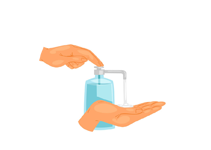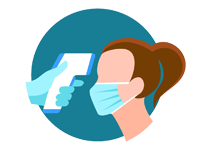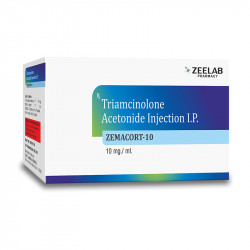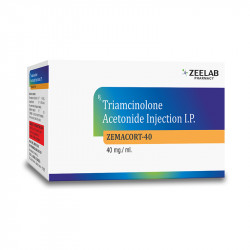Triamcinolone
Triamcinolone is a synthetic corticosteroid utilized to manage a variety of inflammatory and allergic conditions. It functions by suppressing the immune response, thereby reducing inflammation and associated symptoms. Available in multiple forms—including topical creams, injections, and nasal sprays—Triamcinolone is prescribed based on the specific medical condition and patient needs.
Uses of Triamcinolone
- Management of skin disorders such as eczema and psoriasis
- Treatment of allergic reactions
- Relief from arthritis and joint inflammation
- Asthma management
- Reduction of oral ulcers
How Triamcinolone Works
Triamcinolone works by inhibiting the release of substances in the body that cause inflammation. By suppressing the immune system's inflammatory response, it alleviates swelling, redness, and discomfort associated with various conditions.
Benefits of Triamcinolone
- Effective reduction of inflammation and associated symptoms
- Versatility in treating multiple conditions
- Availability in various formulations for targeted therapy
- Rapid onset of action in acute conditions
- Proven efficacy in chronic disease management
How to Take Triamcinolone
The administration of Triamcinolone depends on its form and the condition being treated. For topical applications, apply a thin layer to the affected area as directed by your healthcare provider. Injectable forms should only be administered by a medical professional. Nasal sprays are typically used once or twice daily, as prescribed. Always follow your doctor's instructions regarding dosage and duration to minimize potential side effects.
Types of Dosage Available
- Topical creams and ointments
- Injectable solutions
- Nasal sprays
- Dental pastes
- Aerosol sprays
Side Effects of Triamcinolone
- Skin irritation at the application site
- Increased appetite and weight gain
- Stomach discomfort or bloating
- Headache or dizziness
- Potential for increased blood sugar levels
Safety Advice
- Inform your doctor of any existing medical conditions or allergies before starting Triamcinolone.
- Avoid contact with eyes when using topical forms.
- Do not use occlusive dressings unless directed by a healthcare provider.
- Monitor blood sugar levels if you have diabetes, as corticosteroids can affect glucose control.
- Consult your doctor before discontinuing the medication to avoid withdrawal symptoms.
Frequently Asked Questions (FAQs)
Q: Can Triamcinolone be used during pregnancy?
A: Consult your healthcare provider before using Triamcinolone if you are pregnant or planning to become pregnant.
Q: Is it safe to use Triamcinolone while breastfeeding?
A: Triamcinolone can pass into breast milk. Discuss with your doctor before using it while breastfeeding.
Q: How long does it take for Triamcinolone to work?
A: The onset of action varies depending on the condition and form used but generally ranges from a few hours to a couple of days.
Q: Can I use Triamcinolone on my face?
A: Use on the face should only be under the guidance of a healthcare provider due to the sensitive nature of facial skin.
Q: Are there any long-term side effects of using Triamcinolone?
A: Long-term use may lead to side effects such as skin thinning, stretch marks, and hormonal imbalances. Regular medical supervision is recommended.
Download India's most affordable pharmacy app
- Compare with medicine prices
- Save upto 90% on your medicine bills

Temperature Controlled storage and delivery

Regular Sanitization

Disinfected Packaging
















 Added!
Added!